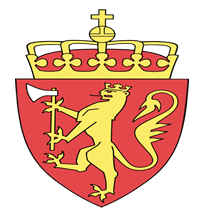Norway: Government
Key Figures
- Chief of State:
- King Harald V
- Head of Government:
- Prime Minister Jonas Gahr Store
Overview
- Government Name:
- Kingdom of Norway
- Constitution:
- Adopted: 1814; Outlines the country's form of government and religion, the executive power, the King, and the Royal Family, rights of citizens and the legislative power, the judicial power, and general provisions
- Government Type:
- Parliamentary Constitutional Monarchy

Index of Economic Freedom
Country Risk Rating
Government Branches
| Main Powers | Election Process | Election Cycle 1 | |
|---|---|---|---|
| Executive | King is mainly symbolic power, but has influence as the symbol of national unity. Cabinet of Norway convenes formally to make decisions on matters of State, passing so-called Royal Resolutions. Prime Minister acts as the political leader of Norway and the Head of His Majesty's Government, few statutory powers, but can command the support of their parliamentary party and can control both the legislature and executive (de facto powers). |
Prime minister is appointed by the monarch and cabinet members are chosen by the prime minister. |
Prime minister: 4 years |
| Judicial | Highest court in Norway and also the court of appeal. |
Judges appointed by the monarch upon the recommendation of the Judicial Appointments Board. |
Mandatory retirement age of 70 |
| Legislative | Acts as a supporting political body for the prime minister and is named after the prime minister. Storting acts as the supreme legislature of Norway. |
Elected through an open-list proportional representation system. |
4 years |
Regional Trade Blocs
International Organization Participation [2]
Environmental Agreements [3]
Tax Information [2]
- Tax Authority:
- Ministry of Finance
- Tax Name:
- VAT
Sources:
- ElectionGuide http://www.electionguide.org/
- EY, http://www.ey.com
- CIA World Factbook, https://www.cia.gov/the-world-factbook/
- U.S. Bilateral Relations Fact Sheets http://www.state.gov/r/pa/ei/bgn/


